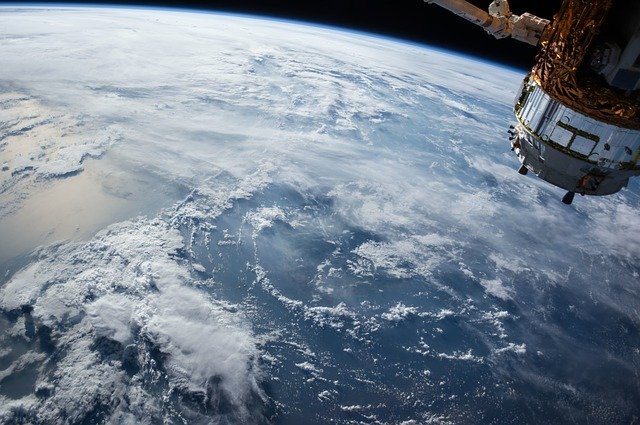The Earth’s Junkyard: the problem with space debris
Space exploration is often regarded as one of our greatest achievements. From men on the moon to growing food on the International Space Station, we have an impressive list of notable achievements regarding space. However, this is coming at a cost.
As of February 2020, there are estimated to be 34,000 pieces of ‘space junk’ bigger than 10cm in orbit. There are also 900,000 debris objects between 1cm to 10cm, and an insane 128 million objects from 1mm to 1cm. Due to the high speed that these debris travel at, even smaller pieces are able to cause damage to satellites or spacecrafts. More space junk, more potential problems.
Man-made objects can include dead satellites that are non-functional or have simply been abandoned. Other sources of space junk include upper stages from rockets, explosion fragments, and the testing of anti-satellite weapons
There are a number of different things which create space debris. It is important to note that some space debris is natural (meteoroid), but most meteoroids orbit around the sun while artificial (man-made) debris orbits around the Earth. Man-made objects can include dead satellites that are non-functional or have simply been abandoned. Other sources of space junk include upper stages from rockets, explosion fragments, and the testing of anti-satellite weapons in the space race of the 1960s and 1970s. In 2015, a 20-year-old U.S. military weather satellite exploded in orbit, producing 43 pieces of space debris.
The 2007 Chinese anti-satellite missile test is regarded as the largest creator of space junk from a single event. As of 2016, this event alone has created 3,428 pieces of debris. Large objects in space are tracked in order to predict collision risk, and out of the 10,000 pieces of debris larger than 10cm being tracked, 3,000 were created in the test.
Why is space junk such an issue? The more objects we have orbiting our earth, the more likely collisions are to occur. The first verified collision of two man-made objects in space happened in 1996 with a French satellite called Cerise. It was hit by debris from an Ariane rocket which exploded 10 years earlier. 2009 saw a major collision between Kosmos 2251, a derelict satellite, and Iridium 33 which was operational. The two collided over Siberia, destroying both in the process.
Crewed spacecrafts such as the International Space Station are also very wary of collisions with debris. As of 2020, the ISS had conducted 23 avoidance manoeuvres, using its thrusters to move out of the way of large pieces of debris or asteroids.
If the amount of space pollution in low Earth orbit becomes too dense, it could create a chain reaction of collisions
The biggest problem with space debris involves its interference with future space activity. In 1978, NASA scientist Donald J. Kessler proposed the Kessler Syndrome. If the amount of space pollution in low Earth orbit becomes too dense, it could create a chain reaction of collisions, each creating more space debris which consequently generate more collisions. This event could render future space activity and satellite use impossible. Although the event would have minimal consequences for satellites in medium Earth orbit and beyond, the majority of outer space man-made objects function in low Earth orbit, including all crewed space stations such as the International Space Station. How can we avoid such a catastrophic event?
In order to save our low Earth orbit, we need a combination of future spacecrafts removing themselves from orbit and a clean-up effort to remove debris externally. It is a lot easier to design something that could remove itself from orbit, for example giving it the extra fuel it needs to bring itself back. This may be more expensive than simply leaving it up there and forgetting about it but would be much cheaper than an external removal later on. In 2019, the European Space Agency (ESA) commissioned the world’s first space debris removal, planned for launch in 2025. The ClearSpace-1 mission will target a specific object, the VESPA, left after the ESA’s Vega launch in 2013. If successful, it can repeat the process with other large space debris, a useful yet also time-consuming process.
The space debris problem is not down to the responsibility of one single country. It will require a global effort if space exploration is to be guaranteed for future generations, and an effort I hope agencies will work harder towards in the near future.

Comments